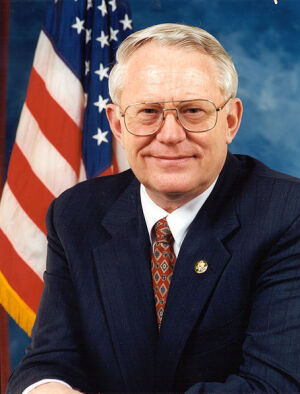CARE bill supporters testify before Congress
by
Brendon Nafziger, DOTmed News Associate Editor | June 08, 2012

Rep. Joseph R. Pitts (R-Pa.)
chairs the House health
subcommittee.
Ionizing radiation doses from CT scanners received by patients vary not just from hospital to hospital, but sometimes from procedure to procedure at the same institution. A patient getting a head CT scan might receive 20 times the dose of another patient getting an identical procedure at the same hospital, according to expert testimony delivered on Capitol Hill.
"This is sadly more akin to Russian Roulette than personalized medicine," Dr. Rebecca Smith-Bindman, a radiologist with University of California, San Francisco School of Medicine, testified before Congress Friday during a hearing on the CARE bill.
Also known as the Consistency, Accuracy, Responsibility and Excellence in Medical Imaging and Radiation Therapy bill, or H.R. 2104, the legislation would require national minimum standards for radiologic technologists and radiation therapists.
Supporters of the bill believe it would help ensure CT technologists, and those who operate other imaging equipment and radiation therapy devices, are properly trained to avoid the wild inconsistencies in dose described by Smith-Bindman. They also said the law could help save Medicare money, as better-trained techs would be less likely to botch scans, the repeats of which cost the government program millions of dollars a year.
State only
Currently, licensing of operators of imaging equipment and radiation therapy devices is left to the states. But according to testimony from Sal Martino, CEO of the American Society of Radiologic Technologists, which has supported versions of the bill for the better part of a decade, 11 states don't regulate radiographers, 15 states don't regulate radiation therapists, and 20 states don't regulate nuclear medicine technologists.
"In states without regulations, people are allowed to expose patients to potentially dangerous levels of radiation after just a few weeks of on-the-job training," he said in his written testimony for the hearing, called for by the House Energy and Commerce Committee's subcommittee on health.
Under the CARE bill, radiologic technologists and radiation therapists would be required to graduate from a formal education program, pass a national certification exam that tests their understanding of the field, and obtain continuing education credits throughout their careers to ensure they stay proficient, according to Martino, whose society represents about 146,000 techs.
Medicare reimbursement would be contingent on meeting these standards, which, under the bill, would actually be established by the secretary of the Department of Health and Human Services, according to a statement from Rep. Joseph R. Pitts, a Pennsylvania Republican and chair of the health subcommittee.
|
|
|
You Must Be Logged In To Post A Comment
|


Marshall Shannon
TSA
June 11, 2012 05:40
AND WHOM IS REGULATING THE TSA AS THEY BLAST RADIATION THROUGHOUT THE AIRPORT? We regulate on one hand and compel another group to do potential harm with unregulated employees running regulated machines without informing the public at all of potential radiation issues.
The dose is low, but what about those guys who fly 180 flights a year, that is about 360 X-ray doses. The GOVERNMENT OBVIOUSLY DOES NOT KNOW BEST.
"We are with the GOVERNEMENT and we are HERE TO HELP" YEA SURE......
to rate and post a comment